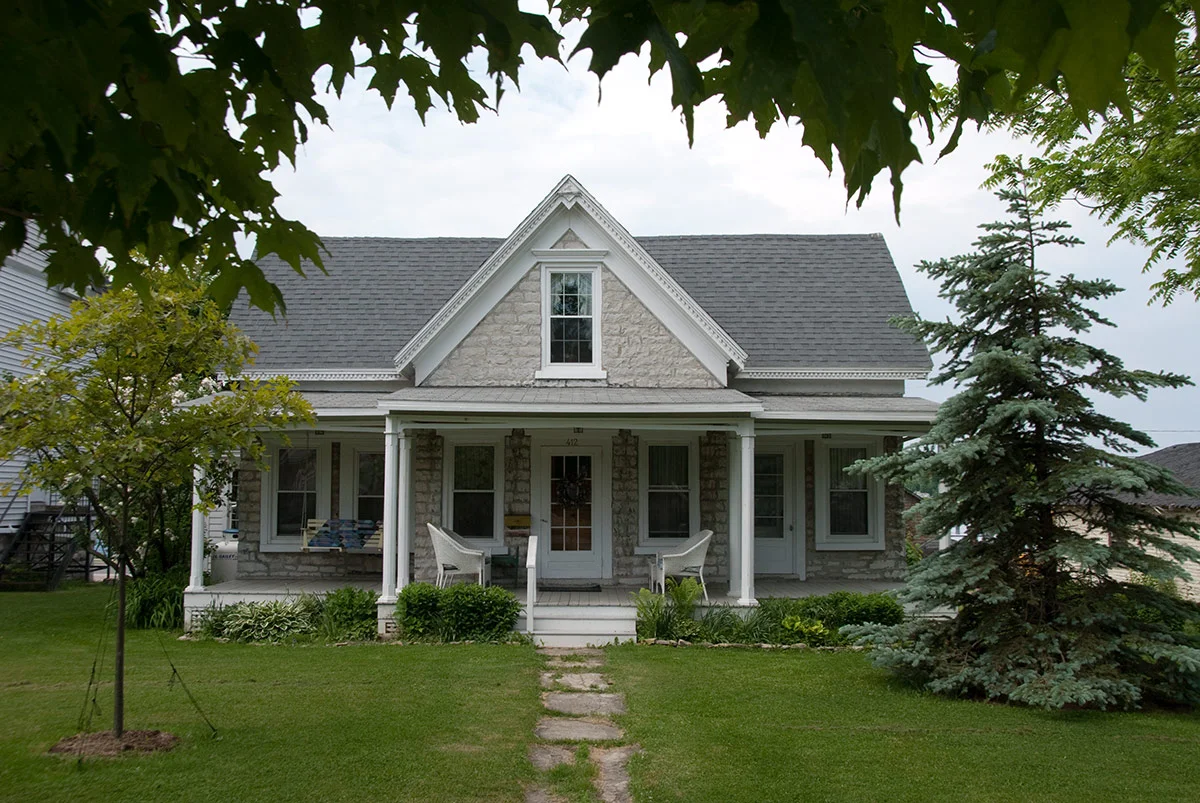
Q. Where did the settlers of Jefferson County, NY, come from?
A. Most came from New England and New York, but there were important landowners from France who contributed to the early culture, and there were Quaker settlers, as well as German, Swiss, Irish, and Welsh. Their influences can be seen in the stone building tradition.
Calvin Britton House, Brownville
The Calvin Britton House, 1815-16 was built into the hillside and surrounded by stone fences. It has especially thick walls, a recessed front door and plan that reflect the first owner’s English roots.
Stone House, Cape Vincent
This is the St. Lawrence River façade of the Stone House built for Vincent Le Ray in 1815. The Le Ray family were important early French landowners. The house is of coursed limestone quarried on nearby Carleton Island. Elliptical segmented arches with fan lights top the first-floor windows and doors. Thankfully, the wooden balustrade remains in place.
Q. Who were the masons and builders?
A. We know the names of only a few of the stonemasons: Asa Eggleston, Asa Gates, Ignatius Wiley, Hugh MacPherson, Hial Cook, and Paul Anthony. There was master builder David Granger and designer of the barracks at Sackets Harbor, William Smith. The countless quarrymen who cut and formed stones for these houses go unacknowledged. Many are presumed to have come into the area after working on the Erie Canal which was finished in 1825.
Asa Gates House
Original 12/8 window
Stone mason Asa Gates built this lovely two-story home for his wife in 1828. It retains the beehive oven in the kitchen. Nearby is a stream of “the finest water.”
Engraved initials of Asa Gates over the front door
Q. What was the building style in Jefferson County?
A. Although there are many similarities, no two of the county’s stone buildings are alike. They range from elegant mansions in the Federal and Greek Revival styles to small one-and-a-half-story vernacular farmhouses.
The Angel House, c 1853, Gothic Revival cottage style in Clayton.
Mill Creek Bridge
Stone was also used for bridges, like this one built over Mill Creek in Sackets Harbor in 1819.
Q. Could you suggest a recipe for soft mortar suitable for an old stone house? I am told not to use the hard mortars readily available in hardware stores.
Soft Mortar Mix #1
6 parts sand
1 part type S hydrated lime
6 parts water
Mix the sand and lime together well.
Add water to the required consistency.
Use within two hours.
Soft Mortar Mix #2
1 part white Portland Cement
3 parts type S hydrated lime
12 parts sand
Mix Portland, lime, and sand together.
Add water to the required consistency.
Use within one hour.

